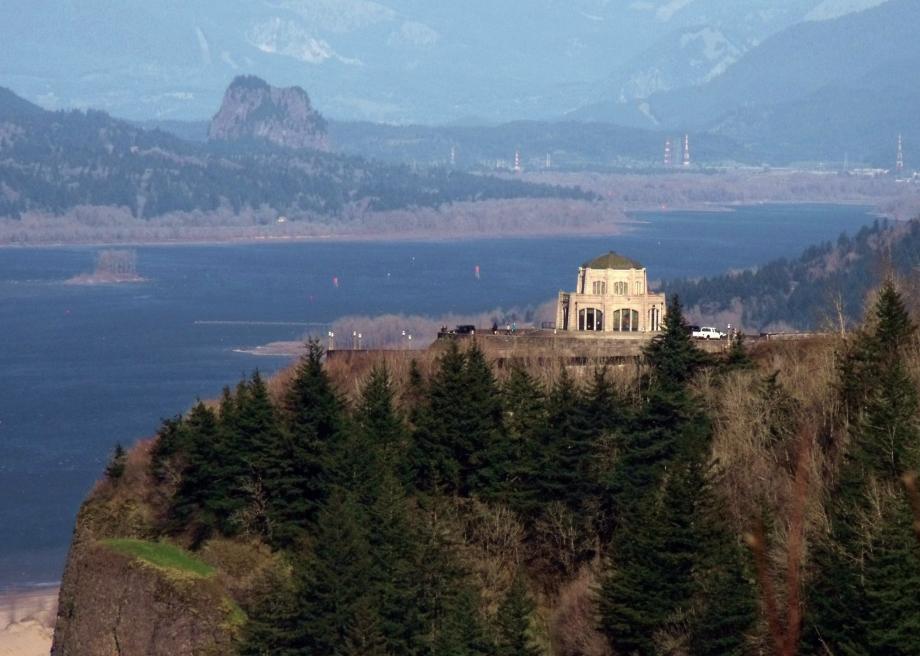Atlas Obscura on Slate is a blog about the world’s hidden wonders. Like us on Facebook and Tumblr, or follow us on Twitter.
Sitting 733 feet above Oregon’s Columbia River, this 1918 Art Nouveau rest stop atop the Crown Point promontory celebrates the grandeur of the great American West with an elegance befitting the view.
Portland architect Edward M. Lazarus intended his extravagant two-story structure to stand as a “temple” to the natural beauty of the Columbia River Gorge. Built on the Crown Point promontory along America’s oldest scenic highway, the octagonal “Vista House” still serves as a place where travelers can take in the view and wonder at the harrowing journey of the Oregon Trail pioneers.
The spot also represents a kind of grand American merger of technological achievement and environmental preservation. Built from 1913 to 1922, the Columbia River Highway was a feat of engineering and civic mobilization. Its two visionaries, lawyer and entrepreneur Samuel Hill and highway designer Samuel Lancaster, saw the tourism potential in an increasingly car-owning population and proposed a major route that would draw visitors while maintaining the integrity of the landscape. Together they shepherded county, state, and federal efforts to build a state-of-the-art highway that remains one of the earliest examples of modern, cliff-face road building. It was Lancaster who suggested the addition of an observatory, citing the need for a resting place where travelers could view the river “in silent communion with the infinite.”
With no state funding available, the project was paid for primarily by Multnomah County and partially by private parties, including funds raised by local schoolchildren. A notoriously expensive undertaking, Vista House garnered a reputation as “the million-dollar rest stop.” On-site historians still refer to it by this nickname, though records suggest that construction ran closer to $100,000. The grey sandstone rotunda borrows architectural elements from German Art Nouveau, with the interior decked out in pink Kasota limestone, rare Tokeen Alaskan marble, and finished with green-tinted, opalized windows to complement the green and honey-toned roof tiles. Considering the awe-inspiring location, it’s easy to see why Lazarus felt it was worth the splurge.
Submitted by Atlas Obscura contributor alexandracoakley.
For more on Vista House, visit Atlas Obscura!
More wonders to explore:
